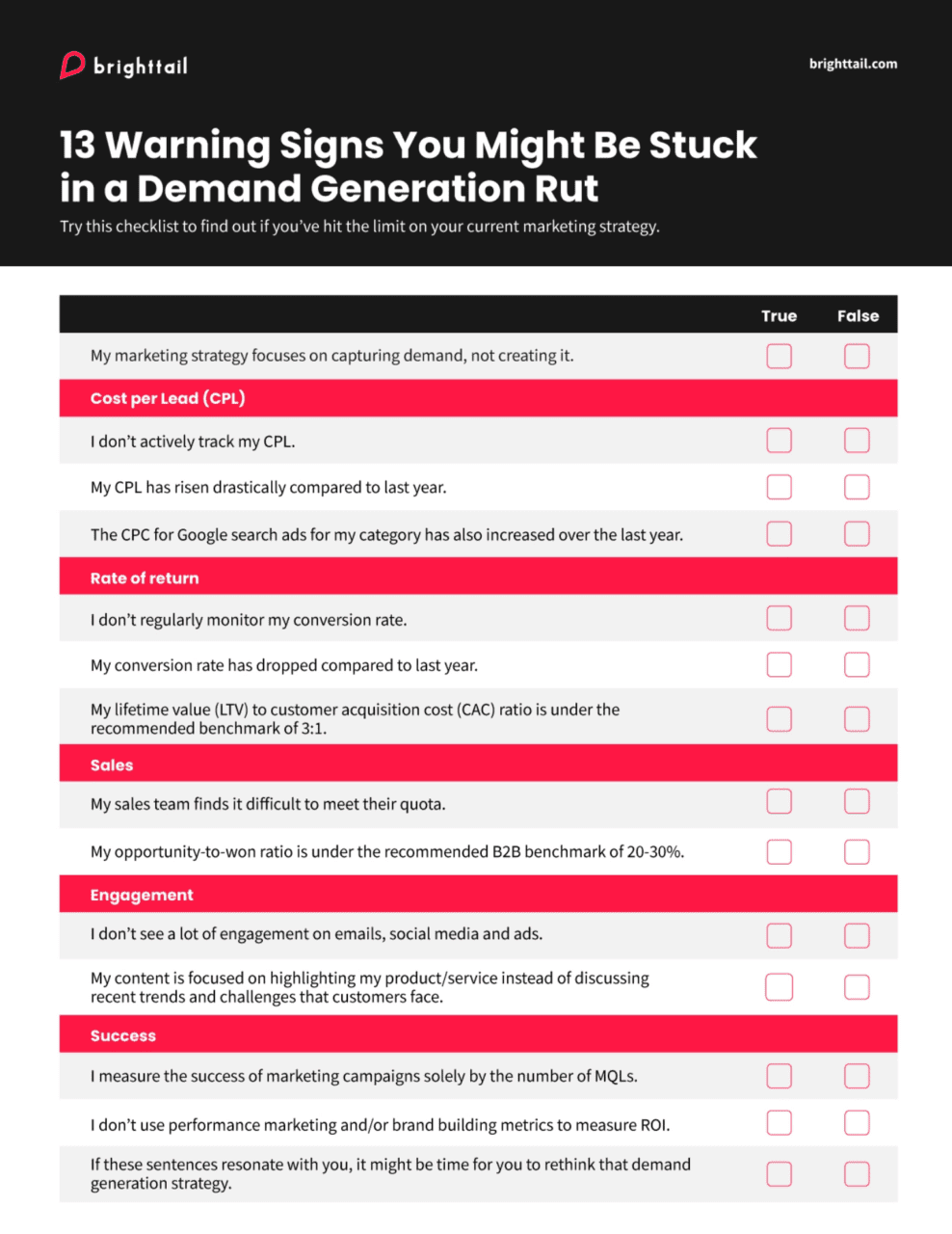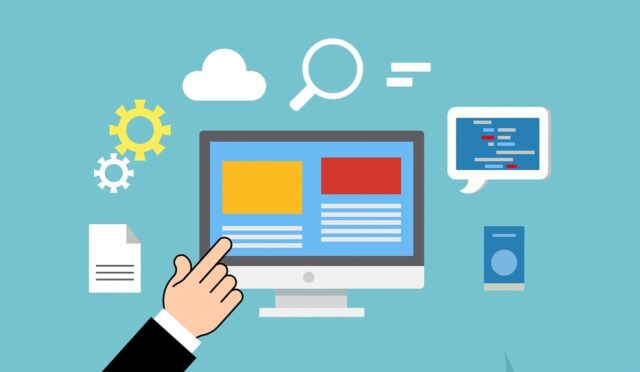For many marketers, the biggest part of any B2B demand generation strategy is capturing demand. Demand capture focuses on engaging or capturing buyers who are actively looking for a solution and ready to convert. It’s arguably the most exciting phase, where you see the most tangible results as leads are coming in and your sales teams are getting on calls with potential customers.
However, focusing entirely on demand capture isn’t sustainable. A strategy that focuses only on capturing leads limits you as your efforts only reach the same shrinking customer pool – the same one that all your competitors are also targeting. In fact, you might already be seeing signs that your marketing efforts aren’t getting you the returns you expected.
Here are some warning signs that your B2B demand generation marketing strategy is hindering your growth instead of fostering it, how to spot them.
1. Your cost per lead (CPL) is rising and cannot be reduced.
Calculated by dividing your total marketing spend by the total number of new leads, your CPL is a great way to check if your ad and marketing campaigns are working to drive leads. However, more marketers are realizing that their CPL has risen dramatically over the past few years: 21 out of 23 industries saw an average overall increase of 19% in CPL year over year in 2023. Last year’s CPL increase was around 5%. Likewise, the average CPC for Google search ads has seen a 19% spike from 2022 for most categories.
This tells us it’s gotten a lot more expensive to acquire leads over a very short time. That means companies are forced to spend more money for each lead acquired, leading to higher overall costs and reduced return on investment (ROI) for your demand capture efforts. It’s also incredibly unsustainable to scale. Rising CPL can stop you from scaling your marketing and you’ll quickly reach a point where the cost of acquiring leads will exceed any potential revenue generated from those leads, making it impossible to grow your customer base.
Note: Keep in mind that CPL tracks your cost per lead, not customers. CPL indicates how effective you are at expanding your customer base based on the level of interest. It doesn’t measure your conversion rate. We’ll talk about tracking your customer acquisition cost (CAC) in the next point.
2. You’re seeing diminishing returns even after you’ve secured a lead.
A capture-focused B2B demand generation strategy is aimed at buyers actively looking for a solution. In the beginning, you might see a good rate of return from such a strategy. But over time, as your target audience becomes saturated with your messaging, the cost of acquiring each additional lead will rise but conversion rates may stay the same or even decline. In fact, research has shown that the overall conversion rate has dropped this year, reaching an average decrease of 14% across 91% of industries.
It may not be evident at first, but if you keep an eye on your marketing profitability, you might notice some disturbing trends. A great way to tell if you’re facing diminishing returns is to look at your lifetime value (LTV) to customer acquisition cost (CAC) ratio. The golden rule is a 3:1 LTV:CAC ratio – meaning that for every $1 spent on acquisition, you want to get $3 back. A ratio closer to 1:1 means that you’re covering your costs but not making a profit, and it’s past time to change your strategy.
3. Your sales team isn’t meeting its quota.
Another sign that your strategy isn’t working effectively is that your sales team is not consistently meeting their quota. An effective B2B demand generation strategy results in a steady stream of qualified leads and interested prospects for the sales team to convert. If they’re struggling to meet their targets, it’s a sign that you’ve hit the limits of this particular strategy.
A good metric to monitor is your opportunity-to-won ratio, which is calculated by dividing the number of closed deals by the number of sales opportunities. This measures the percentage of sales opportunities that are successfully converted into closed deals, and is a good way to gauge if enough leads are being sent through the funnel. While this varies depending on the size and complexity of the deal, a good benchmark for B2B sales is around 20% to 30%.
4. Your target audience isn’t engaging with your content.
Low engagement metrics such as low click-through rates on emails, social media posts, and ads indicate that your audience doesn’t find your content compelling enough to act. It’s a sign that you’re selling, not educating – and this distinction matters more than you think.
It’s a crowded market out there, and you have stiff competition who are all vying for attention from the same customer pool. People – 71% of consumers across age groups, according to a report by Kantar – are getting tired of ads. They don’t want a sales pitch, they want valuable insights, guidance, and solutions to their problem.
This makes it challenging for any one brand to stand out. If you solely focus on pushing your product and capturing demand without providing content that educates audiences and offers value, you risk becoming just another sales pitch easily lost in the crowd.
5. You measure the success of marketing campaigns by the number of MQLs.
MQLs are an important indicator of lead quality and interest, but they shouldn’t be the only measurement of success for a marketing campaign. Relying on them as the sole measure of success can close you off to the other equally important aspects of a B2B demand generation campaign. For example, a focus on MQLs means you’re focusing on quantity over quality, and prioritizing short-term gains.
87% of marketers today believe that a mix of performance marketing and brand building is necessary to measure ROI. But only 63% actually put it into practice. So be part of that 63% and broaden your measurement of success. Consider more holistic metrics that take into consideration other parts of the marketing funnel such as your lead-to-customer conversion rate, CAC, LTV and overall engagement rate.

What can I do to improve my B2B demand generation strategy?
TL;DR? Don’t just stop your demand generation strategy cold. Supplement it with demand creation.
Demand creation is the first half of a solid B2B demand generation strategy and focuses on creating awareness of a problem or need among your audience. Unlike demand capture that only speaks to that 5% of buyers actively looking for a solution, demand creation targets the other 95% of people who may not be aware of their problem. To identify who they are and what motivates them, you’ll need Buystander personas to create new demand where none exists.
The goal here is to spark curiosity over a problem, growing awareness of what might happen if the problem isn’t fixed now, and a dash of FOMO when they realize they might be missing out on something big. And when your brand is the one responsible for their discovery, your audience will turn to you for a solution.



